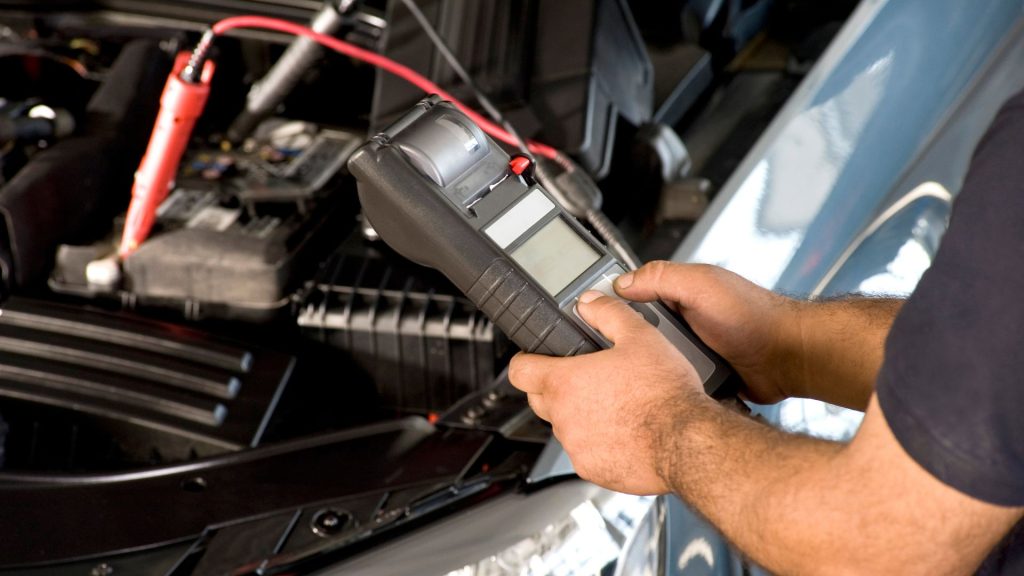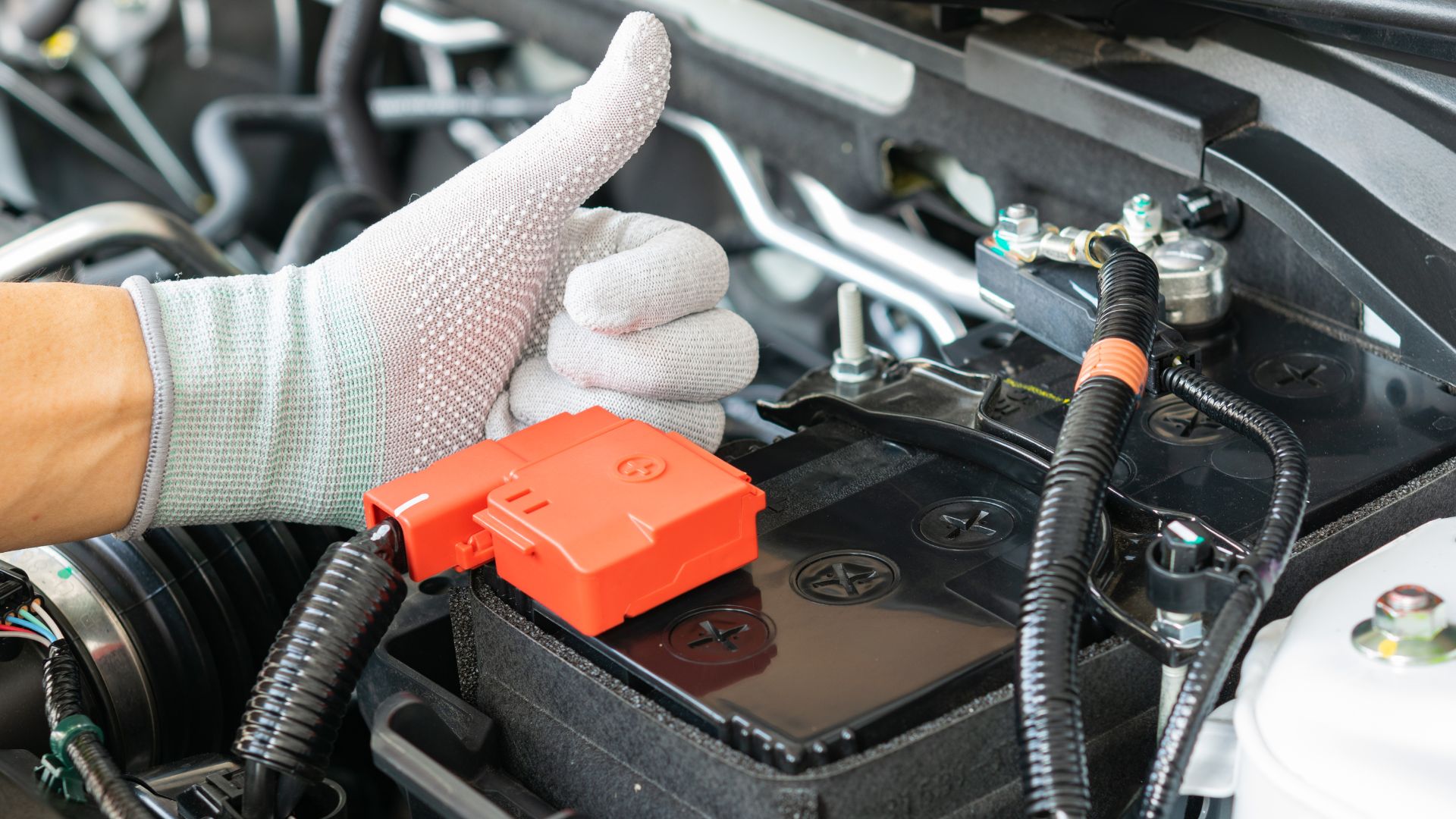Disconnecting a battery from a car with a running engine doesn’t make sense. The reasons that necessitate the removal of a battery require the driver to turn the vehicle off. For instance:
- Some people remove the battery before placing their car in storage.
- You can remove an old battery to install a newer replacement.
- According to the auto zone, you disconnect the battery before diagnosing and fixing the airbag system to deprive the module of power. If the module has power, the airbag may deploy during repairs, injuring the mechanic.
- You can disconnect a flat battery to recharge it.
- You can disconnect a battery to clean corroded terminals.
In all these instances, it doesn’t help you to keep the engine running while disconnecting the battery. If anything, the running engine will interfere with your work. But what if you’re still determined to disconnect the battery from a running car despite the risks?
Go ahead. Mechanics perform this procedure every day. Consider this video from Rvill.
It shows an individual disconnecting the battery from a running car. What happens when you take this risky step?
Nothing. This surprises laypeople because they think the battery runs the car. If that were true, disconnecting the battery would deactivate the vehicle’s electronic components. At the very least, the radio and lights would die.
How come this doesn’t happen? Because the battery is not your car’s primary power source. According to this paper from Universiti Tyeknikal Malaysia Melaka (Faculty of Mechanical Engineering), cars rely on a charging system that includes an alternator, regulator, and wiring.
The battery will only run the car in the absence of this charging system. But the battery is too weak to meet a car’s electrical needs. And even if that weren’t the case, the battery would eventually deplete, forcing the engine to stop because it doesn’t have the current required to fire the spark plugs.
According to Big O Tires, the alternator performs two functions. First, it powers the car’s accessories. Secondly, it recharges the battery. Modern vehicles have computers that control the alternator’s output.
When you disconnect the battery in a running car, the engine will keep running because the alternator is still active. It can provide all the energy the vehicle requires in the battery’s absence.
Student Lesson has classified the battery as an electrical power reservoir in a car’s automated charging system. It will also start the engine when you turn the key in the ignition. In other words, you won’t notice the battery’s absence until you shut the car off and attempt to restart it.
What if the car stops running after you disconnect the battery? It is a symptom of a faulty alternator.
Why Would You Disconnect A Car Battery While Running?
People disconnect the battery from a running car to test the alternator. A healthy alternator will continue to power the vehicle. A defective alternator cannot produce the current the car needs to keep running in the absence of a battery.
People use this procedure to test the alternator after observing several troubling symptoms, including the following:
- The engine doesn’t crank.
- The engine cranks slowly.
- The lights are dim, or they repeatedly flicker.
- The lights are too bright.
- The alternator makes strange sounds.
- Burning smell from the alternator.
- The battery keeps dying. This can happen because the battery has reached the end of its life. Batteries have limited lifespans. According to the National Renewable Energy Laboratory, electric-drive vehicle batteries can remain in operation for ten or more years. But eventually, they will also fail. If your battery is new but keeps depleting, the faulty alternator has failed to charge it.
- The car keeps stalling.
- The battery warning light is on.
But if your alternator has clearly failed, you could make things worse by disconnecting the battery when the engine is running.
How To Disconnect A Car Battery Safely?

- Find an open space that allows toxic gases to dissipate. The workstation should be dry. Wet and damp locations introduce electrocution hazards. Don’t proceed without removing conductive items such as metallic jewelry and wearing safety equipment such as goggles and gloves.
- Shut the car off.
- Open the hood and locate the battery.
- Check the terminals. Are they corroded? Corrosion makes the connectors more challenging to remove. Forcing the connector off may break the post. Apply a water/baking soda solution. If the corrosion persists, scrub the terminals with a wire brush.
- Disconnect the negative terminal. You can identify it using the minus sign or the black cap. It is imperative that you remove the negative connector first. Removing the positive connector first is risky because it exposes you to shocks, sparks, and even explosions.
- Once the negative terminal comes off, do the same for the positive connector. Use pliers to loosen stubborn cables. Don’t allow metallic tools to touch both terminals at the same time.
- Detach the battery from its bracket. If it has bolts, loosen them before pulling the battery out of the tray. If you’ve never carried a battery, prepare yourself. Batteries are heavier than you think. Expect 40 or more pounds.
Disconnecting the battery while the engine runs is no different from disconnecting it when the engine is off. The only difference is the risk. Keeping the engine on may fry the car’s electronic components. However, turning the engine off is equally dangerous if you forget to disconnect the negative connector first.
Risks And Dangers Of Disconnecting A Car Battery While It’s Running
If the procedure for disconnecting the battery remains the same regardless of whether the engine is running or not, why do mechanics discourage you from disconnecting the battery in a running car? Experts have raised the following concerns:
- First of all, you should stop looking at the battery as a mere power source. The component does far more, including shorting spikes and transients to the ground. Removing the battery leaves the semiconductor circuits vulnerable to those spikes and transients.
- The voltage regulator will respond to the battery’s removal by compelling the alternator to generate its maximum power. A vehicle’s alternator can unleash as many as 150 volts, more than enough to fry every electrical device in the car.
- The risk above is even higher if you have a faulty alternator with a penchant for over-charging the battery. Removing the battery allows the alternator to send all that excess voltage to the electronics.
- In some cases, the computer will lock up, introducing a new set of challenges.
- Don’t be surprised if the alternator’s diodes burn out. This will force you to buy a new alternator. You won’t know if the alternator stopped working because it was defective or because the spikes and transients corrupted the ECU. As such, you can’t even trust this method to accurately test an alternator’s functionality.
The risks above are most prominent in newer vehicles with sophisticated computers. You can safely disconnect a battery from a running car.
Alternatives To Disconnecting The Battery While Running Engine
If the alternator seems defective, don’t test it by disconnecting the battery without turning the engine off. Instead, use the following steps:
- Get a multimeter and turn the setting to DC voltage (15 to 20V).
- Open the hood and find the alternator.
- Start the engine
- Run the positive probe to the red terminal on the alternator. The negative probe should touch the car frame. Any metallic surface will do. But the negative probe shouldn’t touch the alternator.
- Check the readings on the multimeter. Readings between 13 and 14 volts point to a functional alternator.
- If the readings are too low, rev the engine. The idle speed in some vehicles is too low for the alternator to generate sufficient power. Check the readings again after revving the engine. If they are still too low, inspect and tighten the alternator’s connections.
Some people are hesitant to tamper with the alternator. In that case, you should test the battery’s voltage:

- Shut the car off
- Connect the multimeter’s positive and negative probes to the battery’s positive and negative terminals.
- Check the readings. They should fall within the vicinity of 12 and 13 volts.
- Start the car and check the voltage again. You’re looking for 14 – 15 volts on the display. This shows that your alternator is working well enough to charge the battery.
If the readings are wrong, don’t be so quick to replace the alternator. For all you know, the belt is loose and keeps slipping when you start the engine. Some mechanics prefer to test the alternator after turning all the heavy loads on, including the lights and air conditioner.
You can disconnect the battery from the car while the engine runs as a last resort, and only after consulting a mechanic. An experienced mechanic can perform this procedure without causing harm.

